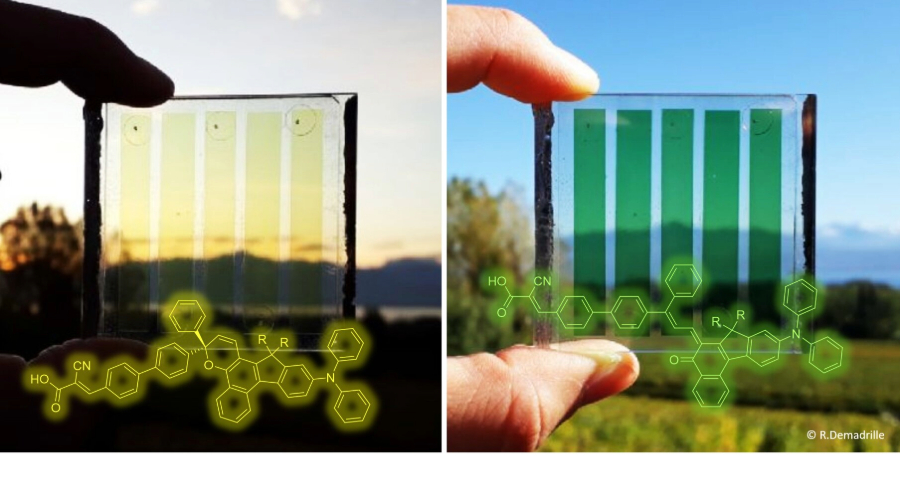Advancements in dye-sensitized solar cells: pushing the boundaries of efficiency and application
Dye-sensitized solar cells (DSSCs) have garnered significant attention as a promising and innovative technology in the field of solar energy. Since their inception in 1991 by Michael Gratzel and Brian O’Regan, DSSCs have undergone substantial advancements, ranging from improvements in efficiency to the exploration of novel materials and fabrication techniques. This write-up delves into the recent progress made in DSSC research, highlighting key advancements and their implications for the future of solar energy.
Recent Technological Advancements
- Advanced Photoactive Dyes: One of the critical components of DSSCs is the photoactive dye, responsible for absorbing light and initiating the electron transfer process. Recent advancements in dye design and synthesis have led to the development of new dyes with enhanced light-absorbing properties. For example, organic dyes and metal-free alternatives are being explored as substitutes for traditional ruthenium-based dyes, aiming to reduce production costs and increase sustainability. Additionally, incorporating quantum dots as sensitizers has shown promise in widening the absorption spectrum, capturing a broader range of sunlight. These innovations contribute to improving the overall efficiency of DSSCs.
- Alternative Semiconductor Materials: Titanium dioxide (TiO2) has traditionally been the preferred semiconductor material in DSSCs. Recent research, however, has investigated alternative materials like perovskites, metal oxides, and graphene. Perovskite-based DSSCs, in particular, have gained attention for their high absorption coefficients and facile fabrication processes. The versatility of these materials opens new avenues for optimizing charge transport and enhancing cell performance.
- Tandem DSSCs for Improved Efficiency: Tandem DSSCs, composed of multiple layers with distinct absorption spectra, represent a significant advancement in boosting overall efficiency. This approach involves stacking cells with complementary dyes, allowing for more efficient solar spectrum utilization. Tandem DSSCs have demonstrated higher power conversion efficiencies compared to single-layer cells, showcasing their potential for commercial applications where maximizing energy output is crucial.
- Solid-State Electrolytes for Enhanced Stability: One of the challenges facing traditional DSSCs is the stability of liquid or gel-based electrolytes. Recent efforts have focused on developing solid-state electrolytes to address this issue. Solid-state electrolytes offer improved stability, reduced leakage, and enhanced safety, making DSSCs more viable for long-term applications. These electrolytes also contribute to the development of flexible and lightweight DSSC devices.
Applications and Future Prospects
- Flexible and Transparent Solar Devices: The flexibility of DSSCs has led to their integration into flexible and transparent solar devices. Thin, lightweight, and conformable DSSC modules can be incorporated into various surfaces, such as clothing and flexible electronic devices, enabling the creation of wearable and portable solar-powered systems.
- Building-Integrated Photovoltaics (BIPV): DSSCs’ transparency makes them suitable for integration into building materials, turning windows and facades into transparent solar panels. This concept aligns with the vision of building-integrated photovoltaics (BIPV), where solar cells seamlessly become part of architectural elements. This dual-purpose application not only generates electricity but also contributes to sustainable and aesthetically pleasing building designs.
- DSSCs in Emerging Technologies: The advancements in DSSC technology have opened doors for their application in emerging fields. For example, the integration of DSSCs into Internet of Things (IoT) devices, smart textiles, and electronic sensors can provide sustainable and decentralized power sources for a range of technologies. The lightweight and cost-effective nature of DSSCs makes them particularly attractive for applications in remote or off-grid areas.
Challenges and Future Directions
While significant progress has been made, challenges persist in the widespread adoption of DSSCs. Improving long-term stability, scalability of production processes, and reducing costs are ongoing research priorities. Additionally, addressing toxicity concerns related to certain materials used in DSSCs is crucial for ensuring environmental sustainability.
Future research directions include the exploration of tandem DSSCs with optimized configurations, the development of more efficient and stable photoactive materials, and the continued refinement of fabrication techniques. Collaborative efforts between academia and industry will play a pivotal role in transitioning DSSCs from research laboratories to commercial applications.
Conclusion
Dye-sensitized solar cells have evolved from a novel concept to a promising technology with diverse applications. Recent advancements in photoactive dyes, semiconductor materials, tandem configurations, and electrolyte design have significantly improved the efficiency and stability of DSSCs. As these advancements continue, DSSCs are poised to play a crucial role in the renewable energy landscape, offering sustainable and adaptable solutions for a wide range of applications.
Source
- https://www.gamry.com/application-notes/physechem/dssc-dye-sensitized-solar-cells/
- https://www.bitsathy.ac.in/a-boon-to-perovskite-solar-cells/

